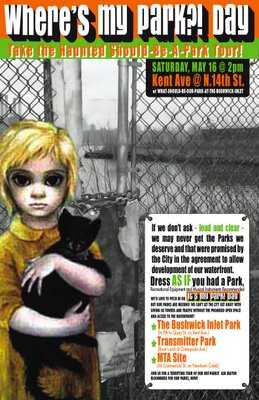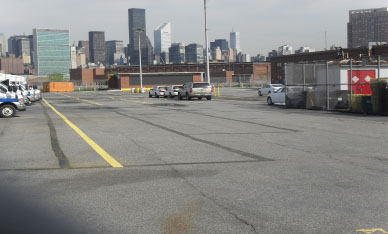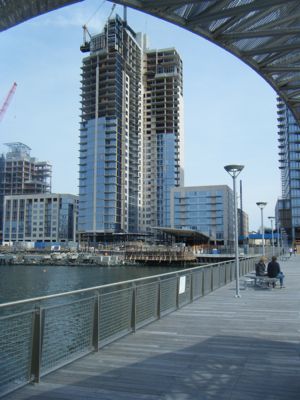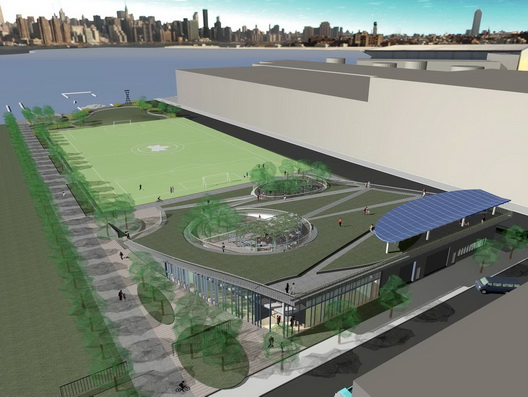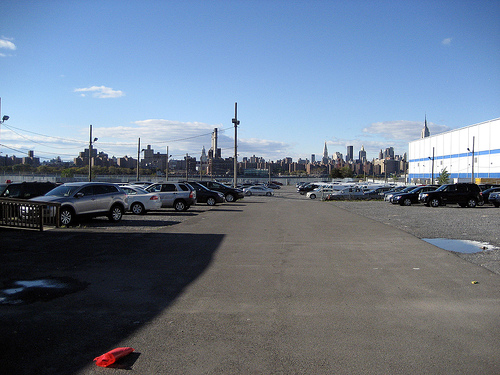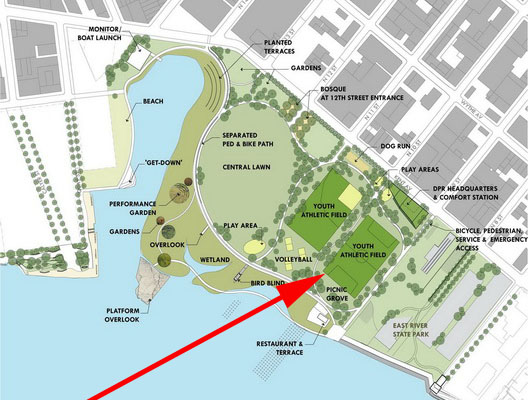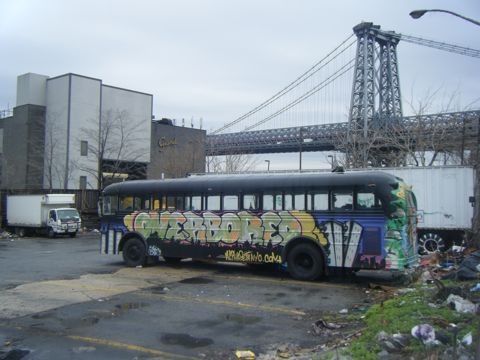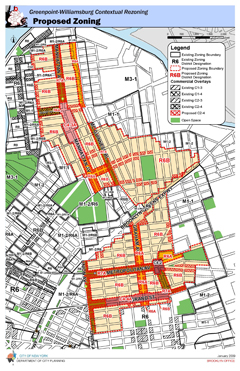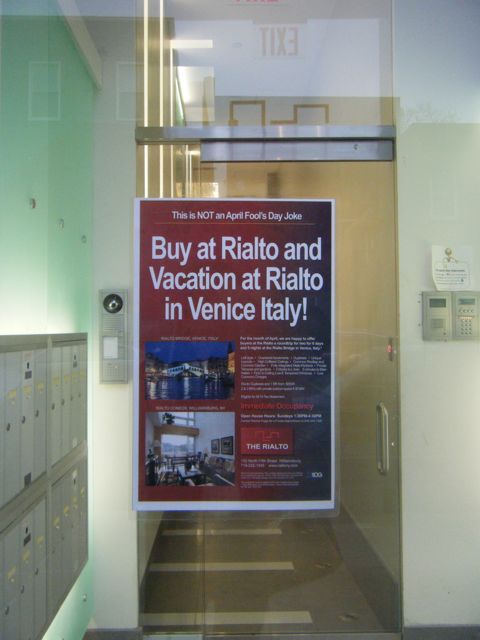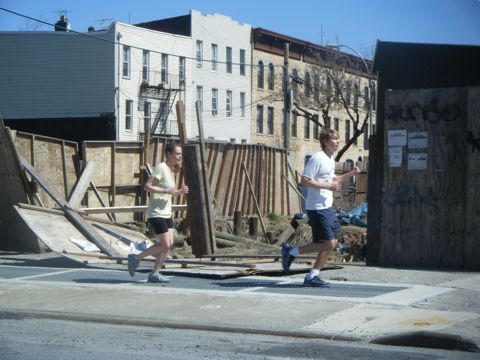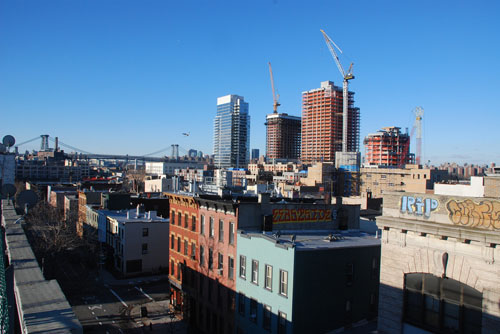
Photo: animalvegetable on flickr
May 11 marks the fourth anniversary of the Greenpoint-Williamsburg Waterfront Rezoning. A lot has happened in four years. Economies have crumbled. Regimes have fallen. The American automobile is more endangered than the American eagle.
Here in North Brooklyn, the last four years have brought construction – a hell of a lot of construction. In Community Board 1, over 1,000 major construction projects have been filed with DOB since May, 2005. Thousands of new housing units are at some point in the pipeline – planned, filed, under construction or occupied. (And despite a global economic meltdown or two, construction in North Brooklyn has not noticeably abated.)
In exchange for all of this new construction, the community was promised a lot. And while the new construction continues full bore, most of the promised benefits of the rezoning have yet to be realized.
On the affordable housing front, the news is mixed. Some of the new housing units going up are affordable to long-term residents. These can be found on the waterfront and far inland. But most of the new construction is going up without making use of the Inclusionary Housing bonus. The first problem was that it took the City awhile to get the IH program online – guidelines for developers were not available until late winter 2006, long after many of the pent up development projects had been permitted and broken ground. The bigger problem was probably the economy – with condos practically minting money, few developers were willing to take the time to qualify for a small bonus that would slow up construction for even a day. It was cheaper to put in stainless-steel appliances, call it a luxury development and watch the money flow. It also didn’t help that the spread between base FAR and bonusable FAR was clearly not wide enough to entice many developers to use the IH program. Add to that the fact that, in retrospect, the program really doesn’t work at R6 levels of zoning – a fact acknowledged by the bump to R7A for the IH program in the contextual rezoning that is now wending its way through the City’s approval process. Where the IH program has worked is at the waterfront developments, where the spread between as-of-right and bonusable FAR is wide enough. But right now waterfront development means Williamsburg – only one project on the Greenpoint portion of the waterfront is anywhere near starting construction. And with 16 of the 19 waterfront blocks in Greenpoint, that leaves a lot of affordable housing in the “potential” column.
Things are arguably worse on the open space front. A lot of new open space was proposed in the rezoning and in the points of agreement negotiated between the City Council and the Bloomberg administration, and almost nothing has been built. The waterfront esplanade is under construction at Northside Piers and the Edge, but is still a ways away from being a public amenity. The North 5th Street pier, which is to be part of this esplanade, is open and may be the only tangible open space addition to have directly resulted from the rezoning. Although it opened in 2008, the East River State Park (the only part-time State Park in New York City) predates the rezoning. Bushwick Inlet Park to the north of that is still in the planning stage. The southernmost section of that park has been acquired and is slated to begin construction soon, but the rest of the park is yet to be acquired (and may require hundreds of millions of dollars of environmental remediation once it is acquired). With no condos being developed in Greenpoint, the waterfront esplanade from Bushwick Inlet to Newtown Creek is years from reality. Transmitter Park at the foot of Greenpoint Avenue has yet to break ground. The sludge tank at Barge Park is still a sludge tank, so no park development can happen there. And 65 Commercial Street is still an MTA parking lot, which means that it is nowhere near being turned into a park.
One bright spot is McCarren Park where (in addition to other work) the City has put up $50 million to renovate the pool. Also encouraging is the fact that NYC Parks is negotiating with waterfront developers to take control of the esplanades (once they are built), with the developers footing most of the bill for maintenance and upkeep. The creation of the Open Space Alliance, not a direct result of the rezoning, is a huge addition to the neighborhood. Also on the positive side, the Manhattan Avenue street-end park has just opened, and the Newtown Creek Nature Walk is a success (albeit an ironic one), but both of those are technically outside the scope of what was promised in the rezoning.
With all the talk of parks and housing, its easy to forget that parts of our community are still zoned for manufacturing. In the aftermath of the rezoning, scads of manufacturers were forced out of newly zoned blocks. The Bushwick Inlet manufacturing enclave – which is surrounded by new residential zoning – was supposed to be one area where manufacturing would be protected by zoning. But that area in particular is looking less and less viable. The manufacturers there don’t have to compete with residential development, but they do have to compete with hotels, bowling alleys, Vespa dealerships and the like. Its not a battle they are likely to win. The bright spots are that the City has finally put together funding to help displaced manufacturers, and has implemented the Industrial Business Zone (IBZ) program to protect industry (a program which is still a work in progress).
Ironically, the area where the community has seen the most progress since May, 2005 is in the promotion of sensible growth. In 2004 and 2005, the community fought hard for height and density levels well below what the City was proposing. The City and the City Council largely ignored the community’s position, and even many within the community saw height and density as a sacrificial lamb on the altar of affordable housing. But since the zoning was enacted, the City has undertaken three separate zoning actions – the 2006 FUCA, the 2008 Grand Street Rezoning and the 2009 Greenpoint-Williamsburg Contextual Rezoning – designed to limit non-contextual building heights and introduce a somewhat more sensible allowable density. The City also stood up to Quadriad’s nonsensical proposal to trade more affordable housing for even more height and density. Finally, there seems to be a recognition that contextual growth matters, and that simply throwing more market-rate housing at the affordable housing problem ultimately leads to more displacement, a more overburdened infrastructure and a less livable neighborhood.
No one expected that all this would take four years. In the boom times of the past four years, it was hard to even keep up on some of these issues, let alone get ahead of the curve. Now, despite the empty City coffers, there might be a chance to catch up. Buy waterfront parkland at a discount. Make the MTA an offer they can’t refuse. Make the IBZ work for manufacturers. Promote a sensible Inclusionary Housing bonus.

